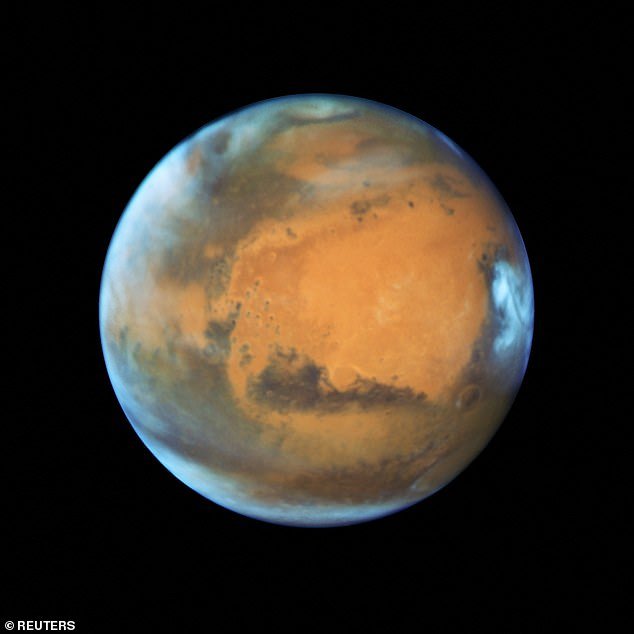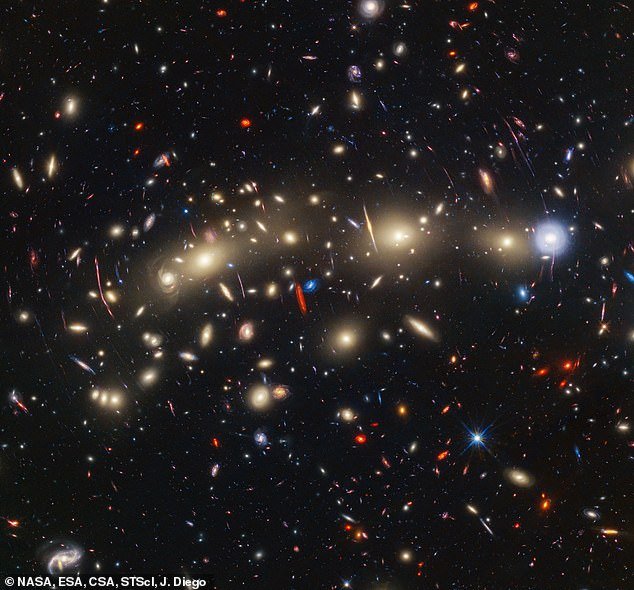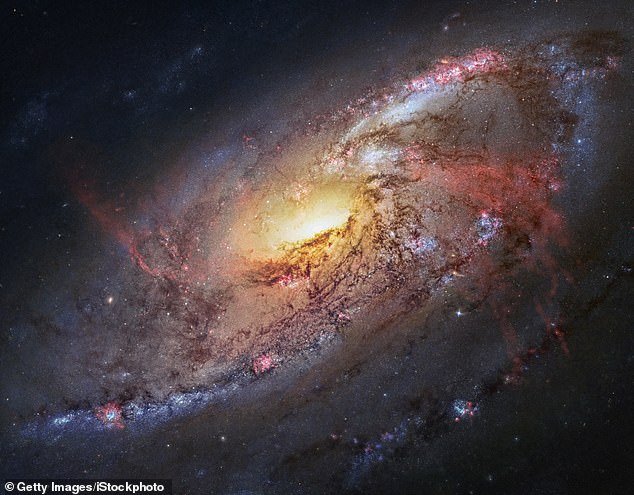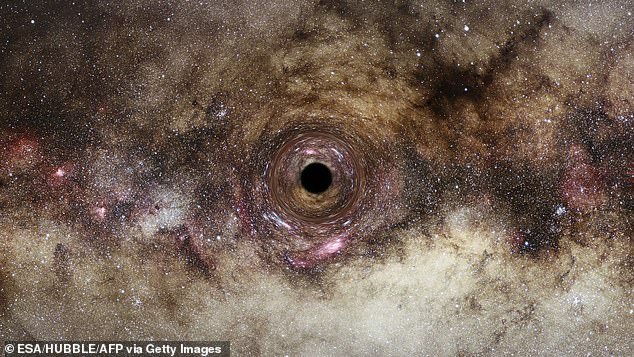NASA pauses $16 billion Hubble Space Telescope that captured age of universe due to ‘glitch’
NASA announced Friday that the Hubble Space Telescope has halted operations due to a mechanical problem.
The problem is one of the gyroscopes, which are needed to help Hubble focus on new targets.
Hubble automatically entered “safe mode” on Tuesday when one of its three gyroscopes – gyroscopes for short – started sending back erroneous measurements.
Scientists used Hubble to determine the first official estimate of the age of the universe, capturing images from the beginning.
Operations have been suspended for now while NASA officials work to resolve the outage.
The Hubble Space Telescope and the James Webb Space Telescope currently operate side by side, but it is only a matter of time before Hubble is scaled back and eventually phased out.

Hubble captured this image of Mars in 2016. Hubble was initially launched via the space shuttle Discovery in 1990 and has been in more or less continuous use since then.
The 34-year-old space telescope, launched in 1990, has had problems with its gyroscopes from time to time.
In addition to measuring the speed at which an object rotates, the gyroscopes also help Hubble stay stable and oriented.
Each of the telescope’s gyroscopes contains a wheel that rotates 19,200 times per minute in a sealed cylinder.
The cylinder is immersed in a thick, viscous liquid, such as motor oil. Fine wires penetrate the fluid and transport electricity to the motor.
It’s not clear if this is the case now, but in the past compressed air forcing the thick liquid into the space containing the wires would have corroded them and caused them to break.
The last Space Shuttle mission to operate the gyros was in 2009.
During that mission, broken gyros were replaced with ones filled with pressurized nitrogen instead of oxygen, intended to prevent corrosion.
Since the end of the Space Shuttle program in 2001 and the launch of the James Webb Space Telescope in 2021, there have been no plans to send any more crews to repair Hubble.
But this doesn’t necessarily mean the end for Hubble.

This view of galaxy cluster MACS0416 was created by combining infrared observations from the James Webb Space Telescope with visible-light data from the Hubble Space Telescope.

Hubble captured this enormous and detailed image of the Spiral Galaxy M106. The two have been working together since the James Webb Space Telescope was launched.
The same gyro had a problem in November, which also caused Hubble to enter safe mode, NASA announced.
It happened when the gyro gave erroneous readings, meaning it couldn’t be relied on to accurately measure how fast Hubble is spinning.
NASA said the team operating the telescope is working on possible solutions.
If absolutely necessary, it can work with just one gyro.
In that case, the third remaining gyro would remain on standby as a backup.

Hubble took this photo of a black hole in our galaxy, the Milky Way. Black holes distort light nearby, creating this effect called “gravitational lensing.”
When Hubble was serviced for the fifth and final time in 2009, it received six new gyros.
Only three of those gyroscopes are still working, including the one that returned erroneous signals.
Ideally, Hubble will use three gyroscopes at a time, but it is also possible that it will work with only one gyroscope at a time.
As to whether this is the end of Hubble, NASA officials remain optimistic.
“NASA expects Hubble will continue to make groundbreaking discoveries this decade and possibly into the next, working with other observatories such as the agency’s James Webb Space Telescope,” the agency wrote in a press release. announcement Today.
